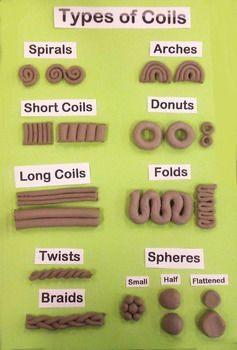Establishing Hispanic Museology
- TheArtofMrsCastaldi

- Mar 8, 2019
- 4 min read

In this response paper, I will highlight perspectives of contemporary museology in regards to gathering, exhibiting, and communicating a contemporary perspective on Hispanic art. Authors Jane Livingston, John Beardsley, and Peter C. Marzio discussed in this response contribute to the contemporary theories that explore the politics, undercapitalization, and demand within the contemporary museums for introducing minorities into museology. This response paper more specifically explores the various connections between artistic development, audience acceptance, and curator empowerment by analyzing a collection of narrative essays, and research from various curators, museum directors, and scholars. The conclusion set forth in this reading response values the cultural and educational experiences of the 21st century museums in a bridge between cultures that introduces contemporary Hispanic art globally; however, the cost of developing, and establishing a new field is generally too expensive, and demanding for the 21st century museums.
Livingston and Beardsley’s (1987) article The Poetics and Politics of Hispanic Art: A New Perspective, describes the organization, exhibition, and commentary of the Hispanic Art in the United States: Thirty Contemporary Painters and Sculptors exhibition from a curator’s perspective. The process was tedious one in which both Livingston and Beardsley were required to gather information on the demographics, and art production of the Hispanic community presently existing in the United States of America. According to Livingston & Beardsley (1987), “the first phase of our projects, then, consisted of amassing as much information as we could on the many Hispanic visual artists in the United States. The second and more difficult task was to shape this information into a coherent exhibition” (p. 107). Both Livingston and Beardsley sought to find and maintain a balance upon the contemporary Hispanic artists and art pieces within the exhibition. However, the curators were limited due to format of artwork in regards to large-scale murals and installation are pieces due to lack of mobility, fragility, and limiting environments of art styles (Livingston & Bearsley, 1987, p.109).
The exhibition received criticism for electing to use the terminology Hispanic as an umbrella term for the classification of artists within the exhibit; however, the curators wanted to include those of the Hispanic descent from South America, Europe, Caribbean, and North American continents. Along with including artists of varying origins, the curators elected to include a range of Hispanic artists from self-taught to highly-trained individuals in their field. Another criticism received was that the curators, Jane Livingston and John Beardsley, were not Hispanic themselves and had “no right to curate a Hispanic exhibition” (Marzio, 1987, p.122). The Peter C. Marzio, the Director of the Museum of Fine Arts in Houston, argues that both Livingston and Beardsley were the most qualified individuals to take on collecting, analyzing, and curating a contemporary art exhibit with a genre that was limited in previous research and catalogued information. Although critics argue that the curators acquiring, selecting, and processing the artwork were non-Hispanic, however, the exhibition created “a special committee of fifty Hispanic community leaders” to assists the museum in both publicizing and reaching out to the Hispanic community (Marzio, 1987, p.123).
According to Director of the Museum of Fine Arts, Houston, Peter C. Marzio, a majority of the top 150 museums in the United States are undercapitalized and are unable to provide the funds needed in order to complete the research, and execution of establishing new program areas and art fields within the realm of museology. In regards to the Hispanic Art in the United States: Thirty Contemporary Painters and Sculptors exhibition, “approximately one-half of the cost of the exhibition was paid out of the operating budgets of the Museum of Fine Arts, Houston, and the other five museums on the tour” (Marzio, 1987, p.123). However, to the majority of the art historians, art critics, and museum visitors, the capitalistic influence on the museum and its drive for revenue remains unseen. The capitalistic drive and pressure that museum directors and curators undergo remains invisible to the everyday person. However, the personal involved receive criticism for lack of diversity, and content—whereas adding to both diversity and content requires an even healthier financial commitment.
Although the Museum of Fine Arts, Houston, and the other five museums were criticized on a number of accounts for, among other things: (i) the ethnic background of the personnel; (ii) the cataloguing of materials; (iii) the selection of artists; (iv) the selection of materials; (v) the selection of time periods; (vi) and the selection of art forms, the Hispanic Art in the United States: Thirty Contemporary Painters and Sculptors exhibition nonetheless paved a way for other museums and exhibits to have accessibility to a catalogued version of contemporary Hispanic art and artists without having to be limited by the under-capitalized nature of the 21st century museums. Further, the exhibition also inspired meaningful artistic and sociological conversations about the purpose, development, and establishment of the Hispanic art genre.
References
Livingston, J. & Beardsley, J. (1987). The Poetics and Politics of Hispanic Art: A New Perspective. In I. Karp, and S.D. Lavine, (Eds.), Exhibiting Cultures, (pp. 104-120). Smithsonian Institution.
Marzio, P.C. (1987). Minorities and Fine-Arts Museums in the United States. In I. Karp, and S.D. Lavine, (Eds,). Exhibiting Cultures, (pp. 121-127). Smithsonian Institution.


Comments